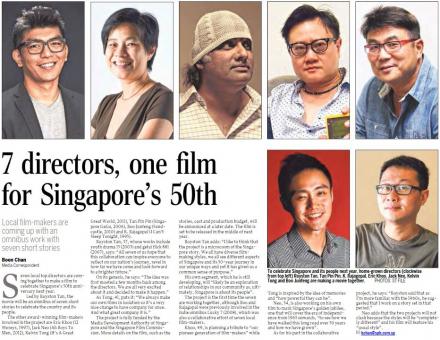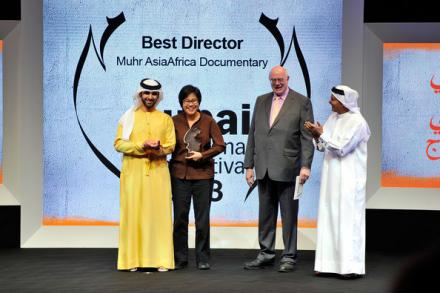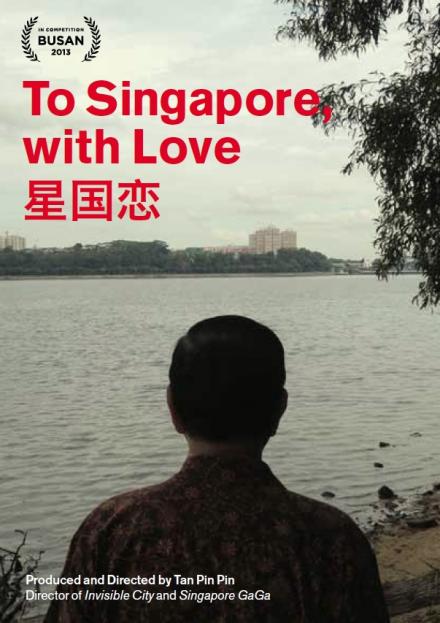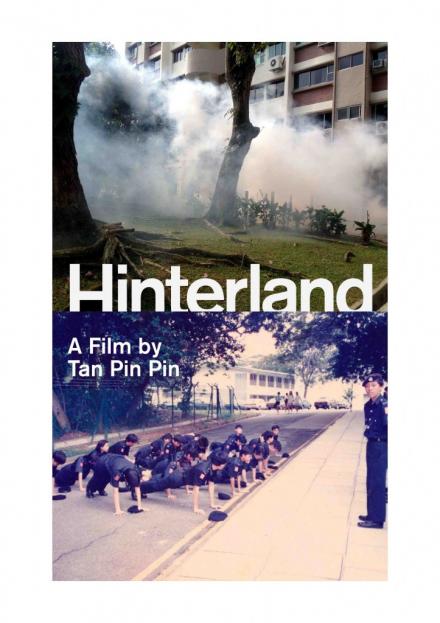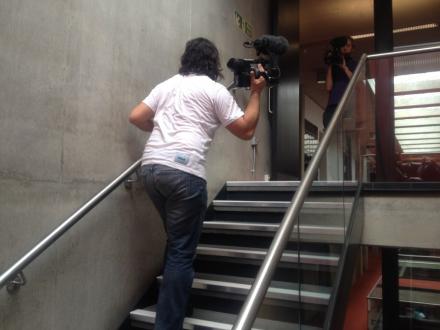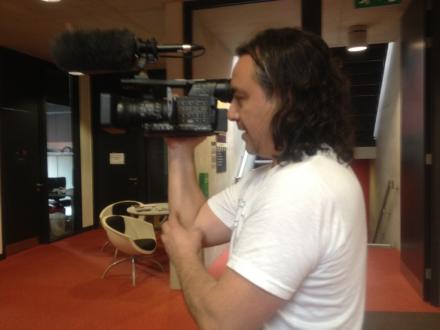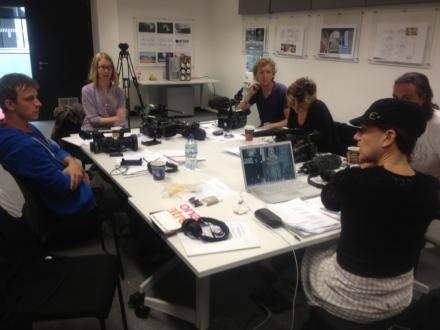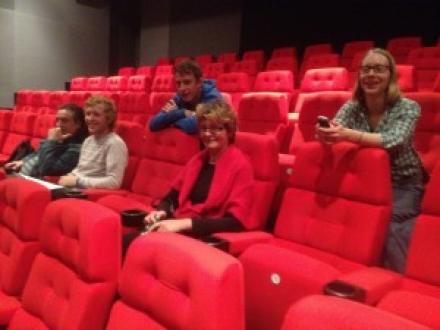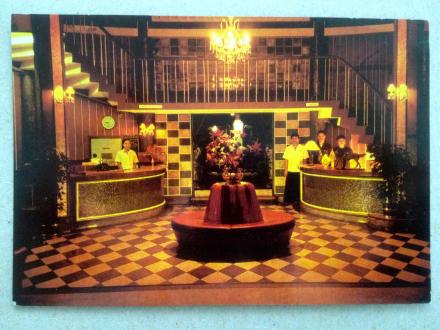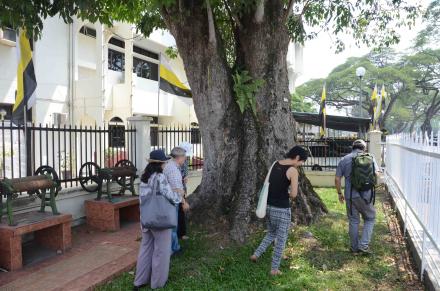The Media Development Authority of Singapore has banned To Singapore, with Love for “undermining national security”. Here is my statement in response, which first appeared on the film’s Facebook page.
STATEMENT BY TAN PIN PIN
Director and Producer of “To Singapore, with Love”
To Singapore with Love (2013) was slated to screen with my other films Invisible City (2007) and Singapore GaGa (2005) at the end of September 2014, in a triple-bill presented by National University of Singapore (NUS) Museum, an institution that I have had a long working relationship with in relation to my previous films.
Now the screenings will not take place.
I am very disappointed by the MDA decision to ban it — for myself, and also what it means for Singapore. Like many of my other films, To Singapore, with Love took shape organically. I was making a video about Singapore?s coastline from afar. In the process of researching the idea of being outside, I stumbled upon Escape from the Lion’s Paw (2012), a book of first-person accounts by Singapore political exiles, people who remain outside the country, but not by choice. I decided to interview one of them in Malaysia. I was so moved by her account that I decided to change focus and To Singapore, with Love was born. Like my other films mentioned above, this film is a portrait of Singapore; unlike the others, this film is shot entirely outside the country, in the belief that we can learn something about ourselves by adopting, both literally and figuratively, an external view.
For this film, I traveled to England, Malaysia and Thailand to interview the exiles to find out how they have lived their lives away from Singapore. Some have not been back for more than 50 years. They talk about why they left, but they mostly talk about their lives today and their relationship with Singapore. They show us the new lives they have created for themselves. One shows us around his noodle-making factory, we visit the law firm of another and play with the children of yet another exile. We also attend the funeral of one of them. Finally, we observe a family reunion that takes place in Johor Baru, the twinkling lights of Singapore a short distance away. The focus is on their everyday lives. These exiles all have different ideological positions and are of different ages; some are communists, others are activists from the Christian Left, yet others are socialist politicians or former student activists. But their feelings for Singapore is intense and heartfelt, albeit sometimes ambivalent, even after so long away. Those feelings (more than the circumstances of their exile, or even the historical “truth” that led to such exile) are what my film predominantly focuses on, because I feel that many viewers might relate to those feelings.
I made this film because I myself wanted to better understand Singapore. I wanted to understand how we became who we are by addressing what was banished and unspoken for. Perhaps what remains could be the essence of us today. I was also hoping that the film would open up a national conversation to allow us to understand ourselves as a nation better too.
I am therefore very disappointed that my film is banned. By doing this, MDA is taking away an opportunity for us Singaporeans see it and to have a conversation about it and our past that this film could have started or contributed to. It is vital for us to have that conversation on our own terms, especially on the eve of our 50th birthday. We need to be trusted to be able to find the answers to questions about ourselves, for ourselves.
It is my deepest regret that we cannot have such a conversation here today. That conversation did start when some Singaporeans saw it at film festivals overseas. Some of the reactions include; “Tender and searching”, “Extremely moving and thought-provoking”, and “A must see”. Now, the irony is that a film about Singapore exiles is now exiled from Singapore as well – this is not something I ever wanted or hoped for.
I hope to be able to show it in Singapore one day, and may re-submit for a rating in the future.
Tan Pin Pin
10 September 2014
More information
Film’s official site
Film’s Facebook page
Director’s filmography
==================
《星国恋》导演兼制片人陈彬彬声明书
影片《星国恋》(To Singapore with Love )(2013)原定于2014年9月,连同我的另外两部纪录片《备忘录》(Invisible City)(2007)和《新加坡风》(Singapore GaGa)(2005),在新加坡国立大学博物馆——一个与我业已建立起长久合作关系的机构——放映。
如今这个同场放映活动将被取消。
对于媒体发展局禁止这部影片做公开放映的决定,我感到非常失望。这不仅仅因为我无法遂愿,也因为禁令对新加坡别具意涵。就像我的其他影片一样,《星国恋》是随着艺术创作的构思发展自然成形的。我原本的录像计划是从远方拍摄新加坡的海岸线。我对身处域外的观念十分感兴趣,而在我进行相关研究的过程中,我偶然找到《狮爪逃生》(2012),一本通过新加坡海外流亡人士采用第一人称叙述亲身经历的书。他们在家国以外生活,却并非出于个人选择。我决定去马来西亚访问他们当中的一位。她的叙述深深打动了我,以致我决定转移影片的焦点。《星国恋》也就这样诞生了。同我其他的作品一样,这部影片描绘的是新加坡;但有所不同的是,它完全是在国境之外拍摄的。我相信我们能够经由采取外部的视角———无论是指身体上的移置或思考上的越界—-对我们自己产生新的理解。
为了拍摄这部影片,我去了英国、泰国和马来西亚采访这些流亡人士,并向他们了解离开新加坡后的的生活情况。他们当中有的已经超过50年未曾回家。尽管他们向我倾诉他们离开新加坡的原因,可是绝大部分时间他们谈的是目前的生活情况和他们与新加坡的关系。他们给我们介绍了为自己创造的新生活。我们于是去了制作面条的工厂,探访了一个律师行,并和另一名流亡人士的孩子一起玩乐。我们也出席了他们当中一人的追悼会。最后,我们在柔佛新山旁观了一名流亡人士与家人团聚的场面,而当时岛国黄昏的灯火就在不远处闪烁。影片的焦点是他们的日常生活。这些流亡人士的意识形态立场不尽相同,也分属不同的年龄层。他们当中有些曾是共产党员,有些是左倾的教会活跃分子,还有一些是社会主义政治人物或当时学生运动的活跃分子。然而,他们对新加坡的情感浓烈而且真挚,尽管偶尔带有爱恨交织的意味,即便离开已经是许久的事。那些情感毋宁才是我影片着重捕捉的元素(而非他们出逃的形势,或甚至导致他们流亡的历史“真相”),因为我觉得许多观众能够领会这些情感。
我之所以拍摄这部影片,是因为我自己希望能够更加了解新加坡。我想通过探讨被放逐的以及无法被代言的人与事,来了解我们何以走到今天。也许最终留存的人与事方才形塑了我们今日的本质。我也原本希望影片能够促成一场全民对话,好让我们更好地了解作为国家共同体的自己。
因此我对影片被媒体发展局禁止放映深感失望。媒体发展局的这个决定剥夺了新加坡人观看这部影片的机会,也让岛国人民无法借由这部影片的内容,以多方对话的形式交流和探讨我们的过往。这场由国民自身决定讨论议项的全国对话至关重要,尤其在新加坡建国50周年来临之际。我们必须争取得到官方的信任,我们能够就有关自己的问题为自己找到答案。
如今这场对话无法开展是我最深刻的遗憾。然而,其实当一些新加坡人在国外的影展上观赏了影片之后,对话已经开始。他们的反应包括“深情且深刻”、“非常动人并引人深思”、“非看不可”。而眼下最反讽的现实是,一部有关新加坡流亡分子的影片本身也遭逢自岛国流亡的命运。这绝对不是我想要或希望出现的境况。
我期待影片终有一天能够在新加坡放映,并考虑在未来重新把片子提交给当局进行分级审查 。
陈彬彬
2014年9月10日


